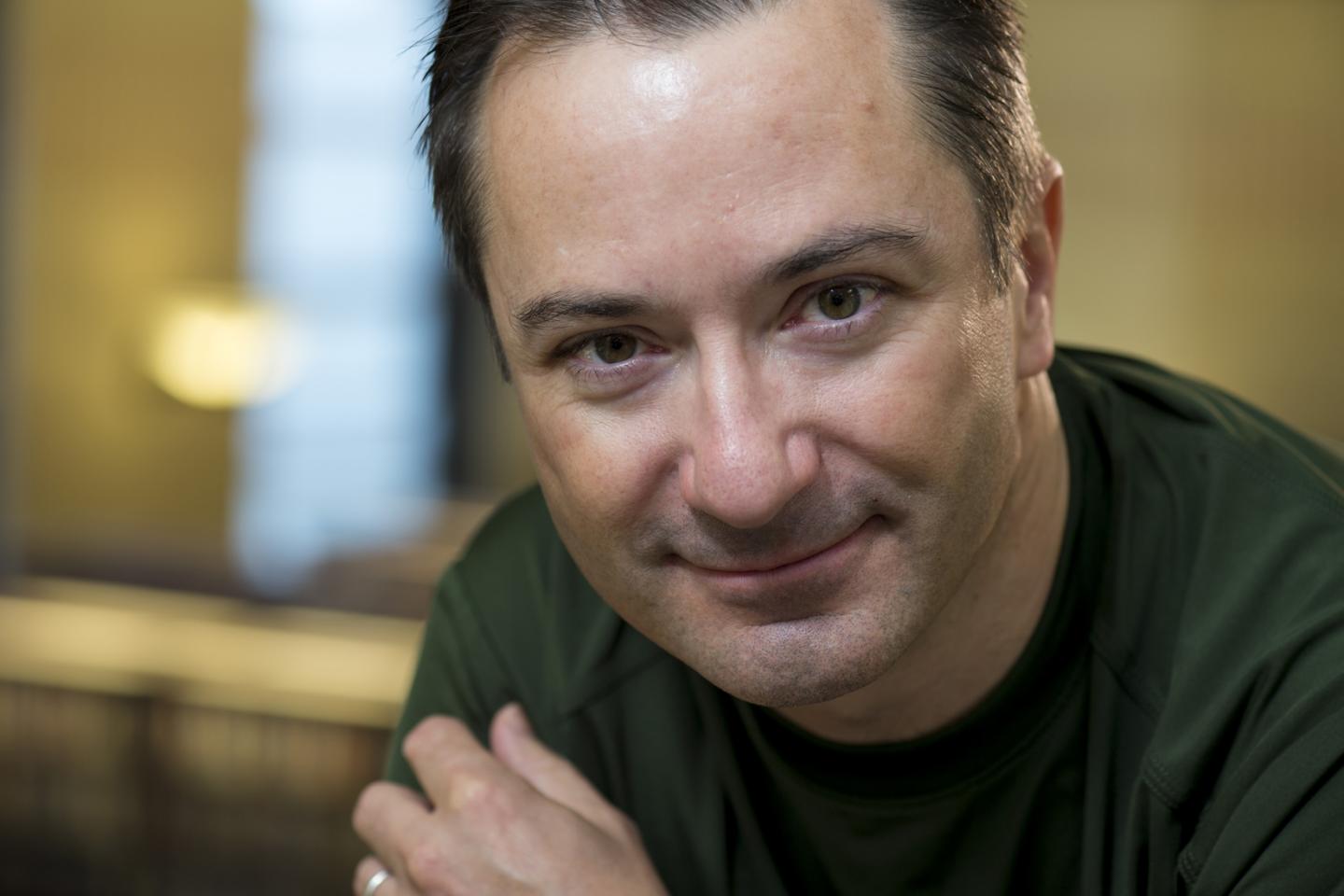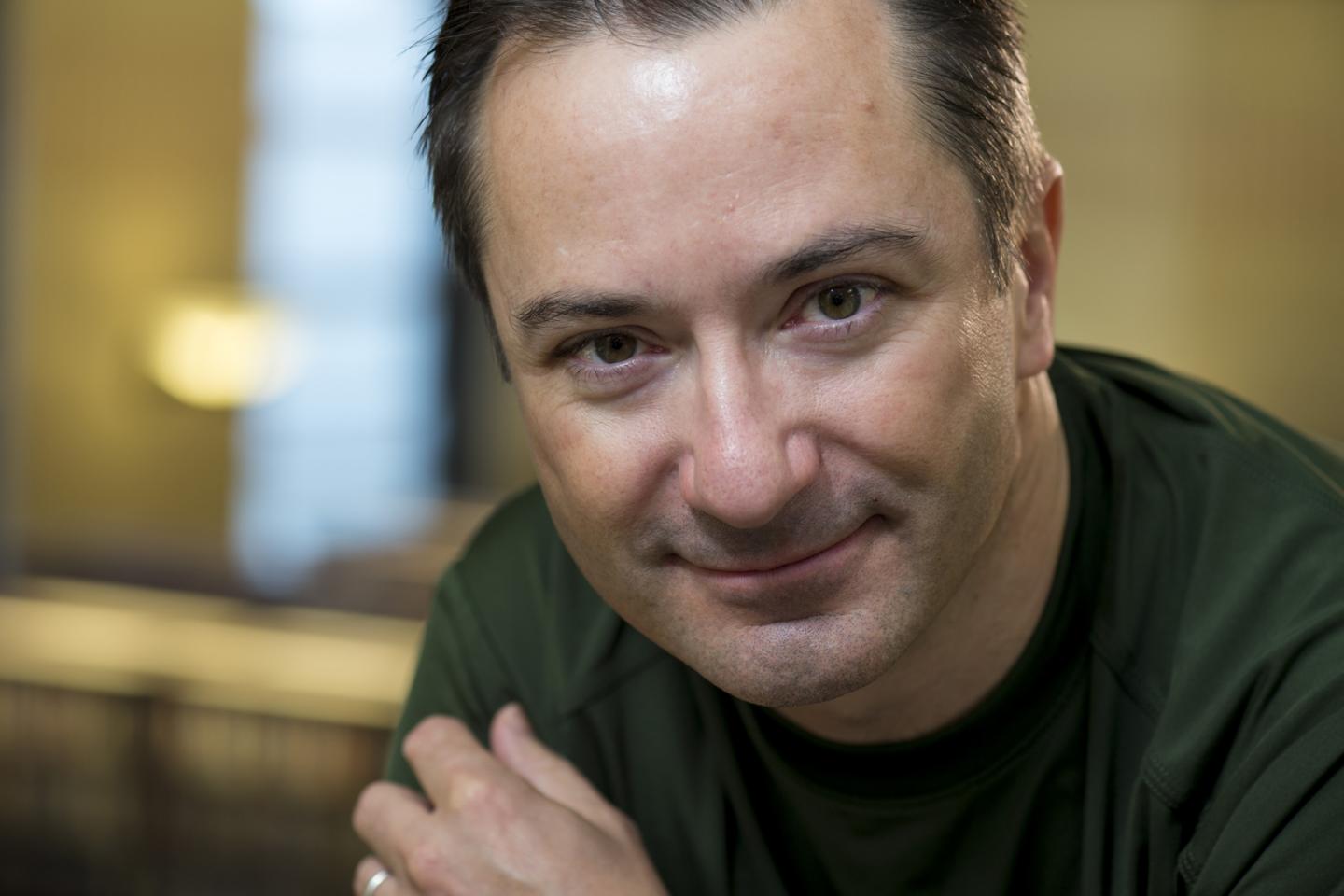
Credit: Jeff Fitlow/Rice University
Rice University compressive-sensing pioneer Richard Baraniuk has won one of the Defense Department's most coveted basic research awards: a five-year fellowship worth up to $3 million for "blue sky" basic research that could produce revolutionary new technologies.
Baraniuk is one of 13 Vannevar Bush Faculty Fellows announced March 29 by the department. The fellows program provides extensive, long-term financial support for basic research by distinguished U.S. university scientists and engineers. It was launched in 2008 as the National Security Science and Engineering Faculty Fellowship program and renamed this year in honor of Vannevar Bush, an American engineer and inventor who headed U.S. scientific research during World War II and later helped found the National Science Foundation.
Baraniuk, Rice's Victor E. Cameron Professor of Electrical and Computer Engineering, is one of the world's leading experts on compressive sensing, a branch of signal processing based on mathematical techniques developed in 2004 that enables engineers to glean useful information from far fewer data samples than would typically be required.
Baraniuk holds 28 U.S. patents and six foreign patents in signal processing and acquisition, including a dozen related to compressive sensing. For example, in 2006 Baraniuk and colleagues used compressive sensing to create the world's first single-pixel camera and they followed that up in 2015 with FlatCam, a lens-less camera thinner than a dime that can be fabricated like a microchip.
"There are nearly 1 trillion Internet-connected sensors on Earth, and the resulting deluge of data from all those sensors stresses our capability to process, understand and make decisions in real time, all of which are important for national security," Baraniuk said.
"Compressive sensing is one of most exciting new approaches for solving these problems, but there are still misunderstandings and misconceptions about it," he said. "Compressive sensing is not a panacea, but it does afford opportunities to profoundly rethink signal models, dimensionality reduction and recovery algorithms. Our Bush Fellow research program will explore, characterize, optimize and introduce new sensing trade-offs that aim to broaden the applicability of the concept, improve its performance in the wild and enable radically new sensing and processing capabilities."
Baraniuk and the class of 2017 Bush Fellows join an elite group of 58 scientists and engineers previously recognized by the National Security Science and Engineering Faculty Fellows program. These include Rice nanophotonics pioneer Naomi Halas, the Stanley C. Moore Professor of Electrical and Computer Engineering and professor of chemistry, of bioengineering, of physics and astronomy and of materials science and nanoengineering.
Baraniuk joined Rice in 1992. In addition to his research in signal processing, he's a well-known pioneer in open education. He founded Rice-based Connexions in 1999 to bring textbooks and other learning materials to the Internet, and in 2012 founded Rice-based open textbook publisher OpenStax, whose freely available textbooks have been used by more than 1.8 million college students.
Baraniuk is a fellow of the National Academy of Inventors, the American Association for the Advancement of Science and the Institute of Electrical and Electronic Engineers (IEEE), been thrice recognized as a Thomson Reuters' Highly Cited Researcher, is a three-time winner of Rice's George R. Brown Award for Superior Teaching and the winner of Rice's 2014 Presidential Mentoring Award. His other honors and awards include the 2012 Compressive Sampling Pioneer Award and the 2008 Wavelet Pioneer Award, both from the International Society for Optics and Photonics (SPIE); the 2015 IEEE James H. Mulligan Education Medal; and the IEEE Signal Processing Society's Best Paper (2015), Technical Achievement (2014) and Education (2010) awards.
###
Related compressive sensing research from Rice:
Random DNA + high-tech math = 'universal microbial diagnostic' — Sept. 28, 2016
http://news.rice.edu/2016/09/28/random-dna-high-tech-math-universal-microbial-diagnostic/
No lens? No problem for FlatCam — Nov. 23, 2015
http://news.rice.edu/2015/11/23/no-lens-no-problem-for-flatcam/
Rice tapped for role in computing research center — Aug. 18, 2009
http://news.rice.edu/2009/08/18/rice-tapped-for-role-in-computing-research-center/
Single pixel camera has multiple futures — Oct. 14, 2008
http://news.rice.edu/2008/10/14/single-pixel-camera-has-multiple-futures/
Rice's single-pixel camera takes high-res images — Oct. 2, 2006
http://news.rice.edu/2006/10/02/rices-single-pixel-camera-takes-high-res-images/
This release can be found online at news.rice.edu.
Follow Rice News and Media Relations on Twitter @RiceUNews.
Located on a 300-acre forested campus in Houston, Rice University is consistently ranked among the nation's top 20 universities by U.S. News & World Report. Rice has highly respected schools of Architecture, Business, Continuing Studies, Engineering, Humanities, Music, Natural Sciences and Social Sciences and is home to the Baker Institute for Public Policy. With 3,879 undergraduates and 2,861 graduate students, Rice's undergraduate student-to-faculty ratio is 6-to-1. Its residential college system builds close-knit communities and lifelong friendships, just one reason why Rice is ranked No. 1 for happiest students and for lots of race/class interaction by the Princeton Review. Rice is also rated as a best value among private universities by Kiplinger's Personal Finance. To read "What they're saying about Rice," go to http://tinyurl.com/RiceUniversityoverview.
Media Contact
David Ruth
[email protected]
713-348-6327
@RiceUNews
http://news.rice.edu
############
Story Source: Materials provided by Scienmag





